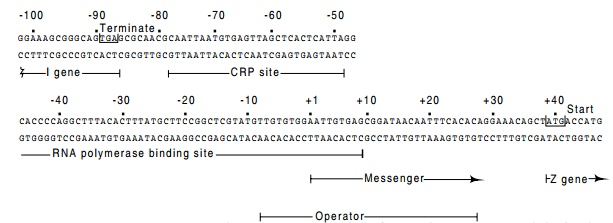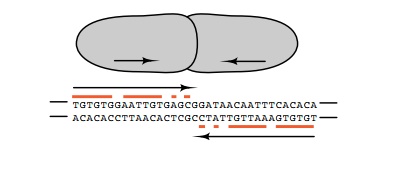Chapter: Genetics and Molecular Biology: Repression and the lac Operon
Isolation and Structure of Operator - Repression and the lac Operon
The Isolation and Structure of Operator
After the isolation of lac repressor and the demonstration that it bound to DNA, interest
turned to the structure of operator. The first questions concerned its size and
sequence. Answering such questions is now straightforward with the application
of genetic engineering techniques. The questions about the lac operator, however, came to the fore before the era of genetic
engineering. Because ingenious techniques were developed and the work directly
led to the development of many of the genetic engineering techniques now used,
we will review the techniques, now outdated, used to isolate and sequence the lac operator.
Before developing their chemical sequencing method,
Gilbert and Maxam sequenced the operator, primarily by direct DNA sequencing
methods, whereas somewhat later Reznikoff, Barnes, Abelson, and co-workers
sequenced the entire lac regulatory
region by purifying and

Figure
11.9 The DNA sequence of thelacregulatory region and the
bindingsites of the proteins that bind there.
sequencing RNA copies of it (Fig. 11.9). Gilbert’s
method required isolation of pure operator itself. DNA was isolated from phage
carrying the lac genes. This DNA was
sonicated to fragments about 1,000 base pairs long, repressor was added, and
the mixture was passed through a cellulose nitrate filter. The DNA fragments
containing operator were bound by repressor and held on the filter whereas the
rest passed through. Then the operator-containing fragments were specifically
re-leased by adding IPTG to the rinse buffer. Finally, repressor was again
bound to these fragments, and the portions of the fragments not pro-tected by
repressor were digested by DNAse. The operator was found to be about 20 base
pairs long, and it had been purified 2000-fold from the phage or 20,000-fold
from the E. coli DNA!
The lac
operator possesses a symmetrical sequence. This suggested that two of the
repressor subunits symmetrically made contact with it (Fig. 11.10). To probe
the structure of lac-operator-repressor
complexes, Gilbert and Maxam turned to DNA protection studies. They bound
repressor to operator and investigated the reaction of dimethylsulfate
Figure
11.10 The symmetry inlacoperator and how a protein consisting
oftwo identical subunits could bind to it.

with bases of the operator in the complex. Indeed,
a symmetrical protection pattern was obtained, but, more important, they
noticed that the method could easily and rapidly be adapted to yield the actual
sequence of a DNA fragment. From this beginning they developed the chemical
method for sequencing DNA.
Related Topics